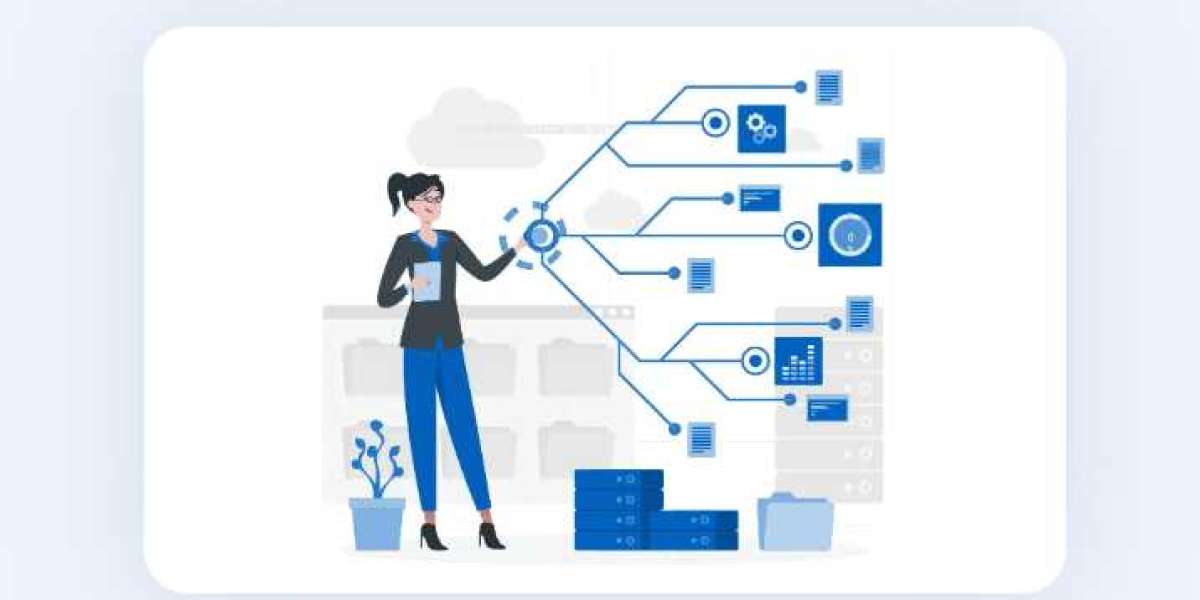Software product development is a sophisticated process that transforms an idea into a functioning and valuable product. This guide delves deeply into each phase of software product development, offering insights into best practices, methodologies, and emerging trends. Whether you're a seasoned developer, a project manager, or an aspiring entrepreneur, this comprehensive overview will provide you with the tools and knowledge to navigate the complex world of software development.
1. Understanding Software Product Development
Software product development is a process that involves the creation, design, deployment, and maintenance of software applications or systems. It encompasses a range of activities from conceptualization and requirements gathering to design, coding, testing, deployment, and ongoing support.
1.1 The Importance of Software Product Development
Software product development is critical in today's digital world. It drives innovation, enhances business operations, and creates value for users. Effective development processes ensure that software products are reliable, scalable, and meet user needs. Successful software products can transform industries, improve efficiencies, and provide competitive advantages.
1.2 Key Phases of Software Product Development
The software product development lifecycle (SDLC) involves several key phases:
- Conceptualization: Identifying a problem or opportunity and defining the objectives of the software product.
- Planning: Outlining the project scope, resources, timeline, and budget.
- Requirements Gathering: Collecting and defining the functional and non-functional requirements.
- Design: Creating architectural and detailed designs for the software.
- Development: Writing the code and implementing the design.
- Testing: Verifying that the software meets the requirements and is free of defects.
- Deployment: Releasing the software to users.
- Maintenance: Providing ongoing support and updates.
2. Phases of Software Product Development
2.1 Conceptualization
Conceptualization is the first step in software product development. This phase involves brainstorming ideas, identifying potential solutions, and defining the purpose and goals of the software.
- Identifying the Problem: The development process begins with recognizing a problem or opportunity. This could be an existing pain point that needs solving or a new idea for improving a process.
- Market Research: Conduct market research to understand the needs of potential users, assess the competitive landscape, and validate the idea.
- Defining Objectives: Clearly articulate the objectives of the software product, including its purpose, target audience, and key features.
2.2 Planning
Planning is a crucial phase that sets the foundation for the development process. It involves creating a roadmap for the project, including timelines, resources, and budgets.
- Project Scope: Define the scope of the project, including the features and functionalities to be included. Establish clear boundaries to avoid scope creep.
- Resource Allocation: Determine the resources required for the project, including personnel, technology, and tools.
- Timeline and Budget: Develop a project timeline and budget. Outline key milestones, deadlines, and costs associated with each phase of the project.
2.3 Requirements Gathering
Requirements gathering involves collecting detailed information about what the software needs to accomplish. This phase is critical for ensuring that the software meets user needs and business goals.
- Stakeholder Interviews: Engage with stakeholders, including end-users, business leaders, and subject matter experts, to gather their input and expectations.
- Requirement Documentation: Document both functional and non-functional requirements. Functional requirements describe the features and functionalities of the software, while non-functional requirements address performance, security, and usability.
- Requirements Validation: Validate the requirements with stakeholders to ensure accuracy and completeness. This step helps prevent misunderstandings and misalignment.
2.4 Design
Design involves creating the blueprint for the software. This phase includes both high-level architectural design and detailed design of user interfaces and interactions.
- Architectural Design: Define the software's architecture, including its components, data flow, and interactions. Create diagrams to illustrate the system's structure and integration points.
- UI/UX Design: Design the user interface (UI) and user experience (UX) to ensure that the software is intuitive and user-friendly. Develop wireframes, prototypes, and mockups to visualize user interactions and layout.
- Design Review: Review the design with stakeholders to ensure it meets their expectations. Incorporate feedback and make necessary revisions.
2.5 Development
Development is the phase where the actual coding takes place. This phase involves writing the code, implementing features, and integrating components.
- Coding: Write the code for features and functionalities based on the design specifications. Implement integrations and ensure that the software meets the defined requirements.
- Version Control: Use version control systems (e.g., Git) to manage code changes and track different versions of the software. Version control helps coordinate development efforts and manage changes effectively.
- Code Review: Conduct regular code reviews to ensure code quality and adherence to coding standards. Code reviews help identify issues early and maintain code consistency.
2.6 Testing
Testing is a critical phase that ensures the software is reliable, functional, and meets quality standards. Various types of testing are conducted to identify and address defects.
- Unit Testing: Test individual components or functions to verify they work as intended. Unit testing helps identify and fix issues at the component level.
- Integration Testing: Test how different components interact to ensure the software functions correctly as a whole. Integration testing helps identify issues related to component interactions.
- System Testing: Test the entire system to validate it meets specified requirements and performs as expected under various conditions. System testing includes performance, security, and usability testing.
- User Acceptance Testing (UAT): Test the software with end-users to ensure it meets their needs and expectations. UAT helps identify any usability issues or gaps in functionality before the software is released.
2.7 Deployment
Deployment involves releasing the software to users and making it available for use. This phase includes preparing for and managing the release process.
- Deployment Planning: Develop a deployment plan outlining the steps for releasing the software, including any necessary configurations or preparations.
- Release Management: Manage the release process to ensure a smooth transition. This includes preparing release notes, coordinating with stakeholders, and addressing any deployment issues.
- Post-Deployment Monitoring: Monitor the software after deployment to identify and address any issues that arise. Track performance, user feedback, and bug reports to ensure ongoing quality and user satisfaction.
2.8 Maintenance
Maintenance is an ongoing phase that involves providing support and updates to ensure the software remains functional, secure, and up-to-date.
- Bug Fixes: Address and fix any bugs or issues reported by users. Regular maintenance helps maintain software quality and user satisfaction.
- Updates and Enhancements: Release updates to add new features, improve performance, and address any issues. Regular updates keep the software relevant and competitive.
- User Support: Provide support to users through various channels, such as help desks, documentation, and forums. Effective user support helps users resolve issues and make the most of the software.
3. Software Development Methodologies
Choosing the right methodology is essential for managing the development process effectively. Different methodologies offer distinct approaches to organizing and executing development tasks.
3.1 Waterfall Model
The Waterfall model is a traditional approach where each phase of the SDLC is completed sequentially. This model is straightforward and easy to manage but can be inflexible in adapting to changes.
- Pros: Clear structure, easy to manage, and well-suited for projects with well-defined requirements.
- Cons: Difficult to accommodate changes, limited flexibility, and may result in longer development cycles.
3.2 Agile Methodology
Agile methodology emphasizes iterative development, collaboration, and flexibility. It involves breaking the project into smaller tasks or sprints, with regular reviews and adjustments.
- Pros: Flexibility to accommodate changes, faster delivery of features, and enhanced collaboration.
- Cons: Requires close collaboration and frequent communication, may lead to scope creep if not managed carefully.
3.3 Scrum Framework
Scrum is an Agile framework that uses fixed-length sprints to deliver increments of the software. It involves regular meetings, such as daily stand-ups and sprint reviews, to track progress and address issues.
- Pros: Provides a structured approach to Agile, promotes teamwork, and allows for frequent feedback.
- Cons: Requires commitment to Scrum practices, may be challenging to implement in larger teams.
3.4 Kanban
Kanban is another Agile approach that focuses on visualizing work and optimizing flow. It uses a Kanban board to track tasks and manage work in progress.
- Pros: Simple to implement, emphasizes continuous improvement, and allows for flexible work management.
- Cons: May lack structure compared to other methodologies, requires discipline to manage work in progress effectively.
3.5 DevOps
DevOps is a methodology that integrates development and operations to enhance collaboration, automate processes, and accelerate delivery. It emphasizes continuous integration (CI) and continuous delivery (CD).
- Pros: Streamlines development and deployment processes, promotes collaboration, and improves efficiency.
- Cons: Requires cultural changes and investment in automation tools, may be challenging to implement in traditional environments.
4. Best Practices for Software Product Development
Adhering to best practices is crucial for ensuring the success and quality of software products. These practices encompass various aspects of the development process.
4.1 Effective Communication
Clear and effective communication among team members and stakeholders is essential for project success. This includes regular updates, status meetings, and using collaboration tools to facilitate communication.
4.2 Documentation
Thorough documentation is vital for maintaining clarity and consistency throughout the development process. This includes documenting requirements, design specifications, code, and testing procedures.
4.3 Code Quality
Maintaining high code quality is crucial for ensuring the reliability and maintainability of the software. Adhere to coding standards, perform code reviews, and use automated testing tools to identify and address issues.
4.4 User-Centered Design
Design software with the end-user in mind. Conduct user research, create user personas, and gather feedback to ensure the software meets user needs and provides a positive experience.
4.5 Security
Incorporate security best practices throughout the development process. This includes secure coding practices, regular security testing, and adherence to security standards and regulations.
4.6 Performance Optimization
Optimize software performance to ensure it meets user expectations and operates efficiently. This includes optimizing code, managing resources, and addressing performance bottlenecks.
4.7 Continuous Improvement
Adopt a mindset of continuous improvement to enhance software quality and development processes. Gather feedback, analyze performance metrics, and implement changes to drive ongoing improvements.
5. Emerging Trends in Software Product Development
Staying abreast of emerging trends is crucial for maintaining a competitive edge in software product development. Here are some key trends shaping the industry:
5.1 Artificial Intelligence and Machine Learning
AI and machine learning are transforming software development by enabling more intelligent and adaptive applications. These technologies are used for predictive analytics, natural language processing, and automation.
5.2 Cloud Computing
Cloud computing continues to revolutionize software development by offering scalable and flexible infrastructure. Cloud platforms provide on-demand resources, facilitate collaboration, and enable rapid deployment.
5.3 Internet of Things (IoT)
The Internet of Things connects physical devices to the internet, creating opportunities for new applications and services. IoT integration in software development enables smarter and more interconnected solutions.
5.4 Blockchain Technology
Blockchain technology offers secure and transparent methods for managing transactions and data. It is increasingly used in applications such as digital currencies, supply chain management, and data security.
5.5 Low-Code and No-Code Platforms
Low-code and no-code platforms empower users to create applications with minimal coding. These platforms accelerate development and enable non-technical users to participate in the creation process.
5.6 DevOps and CI/CD
DevOps and continuous integration/continuous delivery (CI/CD) practices are becoming standard in software development. These practices enhance collaboration, automate processes, and accelerate delivery.
5.7 Cybersecurity
As cyber threats evolve, cybersecurity remains a top priority in software development. Implementing robust security measures, such as encryption and secure coding practices, is essential for protecting software and user data.
5.8 User Experience (UX) Design
UX design continues to be a critical focus, with an emphasis on creating intuitive and engaging user experiences. Designing for usability, accessibility, and satisfaction is key to delivering successful software products.
6. Conclusion
Software product development is a complex and multifaceted process that requires careful planning, execution, and ongoing refinement. By understanding the phases of development, adopting best practices, and staying informed about emerging trends, organizations can navigate the challenges of software development and create products that meet user needs and achieve business goals.
From conceptualization to maintenance, each phase of the software development lifecycle plays a crucial role in delivering high-quality software. Embracing innovation, fostering collaboration, and continuously striving for excellence are essential for thriving in the ever-evolving world of software development. Whether you're building a new application or refining an existing product, a strategic and informed approach will set the foundation for success in the competitive landscape of software product development.



